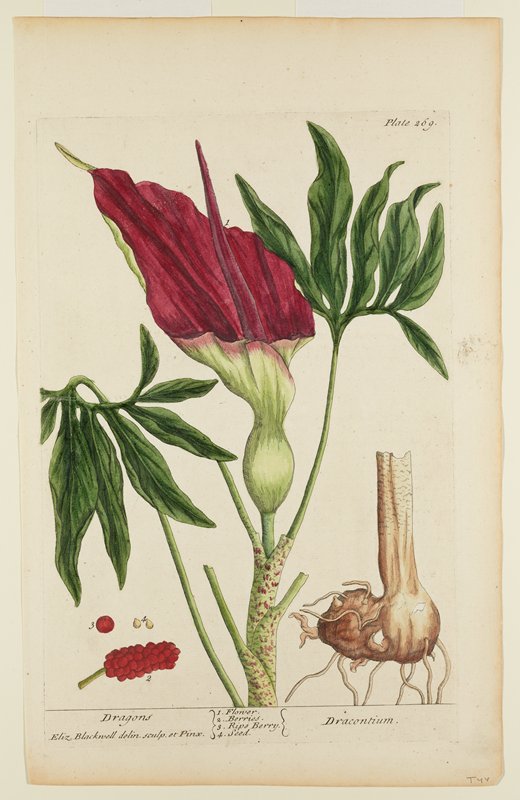This week, Mia unveils six newly reinterpreted period rooms as part of its Living Rooms project, a push to invigorate these beloved spaces with fresh perspectives. I was the curator charged with reinstalling Mia’s two English period rooms to consider the domestic life of science circa 250 years ago, the gilded early days of “modern” science—before it became sequestered in laboratories and siloed academic departments. A time when professional scientists and like-minded non-professionals kept close quarters at home.
In this installation, called “Science and Sociability in 1700s England,” we glimpse what it was like to attend the in-home scientific demonstrations that were popular at the time—the kind of marvelous spectacle that Joseph Wright of Derby depicted in his painting of a parlor-room experiment with an air pump (shown above in a print from Mia’s collection). Granted, not all is well in this scene. The demonstrator behind the air pump hasn’t changed out of his dressing gown. And a small girl in the audience is worried about the bird struggling inside the apparatus as the demonstrator proves the properties of air and its necessity for sustaining life by slowing removing air from the glass chamber (birds in these experiments were often allowed to revive).
But what’s important to note here is this: In the 1700s, learning about the natural world was considered a fun night out—or in—for the well-heeled men, women, and children lucky enough to partake (emotional scars and all). More importantly, women and girls had access to science education through these informal settings, despite their formal exclusion from schools and universities. If science educators then, as now, were racing to spark children’s curiosity by age 10 in order to inspire lifelong learning, then these “scientific parties” could make—or break—adults who were able and willing to make their own inquiries into the natural world.
These rooms also show some of the ways that science-minded non-professionals—dubbed “amateurs” in the 1700s, a term derived from the Latin amator, or lover—contributed to public stores of knowledge about the natural world. You will meet people like Elizabeth Blackwell, a woman with no formal scientific training, who wrote, illustrated, and engraved a highly regarded book on medicinal plants in the 1730s. You’ll hob-nob with aristocrats like Margaret Bentinck, Duchess of Portland, and Mary Somerset, Duchess of Beaufort, both of whom amassed important plant collections on their estates, were active in scientific circles, and funded the work of professional male scientists. You can marvel at a microscope made by Benjamin Martin, or a telescope made by George Adams. Neither Martin nor Adams possessed university degrees in scientific fields, but their precision instruments were coveted by professionals, royals, and amateurs alike.
At first glance, this installation might sound like ancient history. But it’s deeply relevant to today’s discussions about the future of science in the United States: what constitutes a healthy “scientific community” and where that community is headed. This Saturday—Earth Day—a March for Science is being held in the nation’s capital as well as hundreds of other cities, including the Twin Cities. Though the specific goals of the science marchers are many and various—The Atlantic recently enumerated 21 of them—they largely promote the strengthening of relationships between science professionals and the public at large. They want everyday Americans, not unlike their British counterparts in the 1700s, to ”value and invest in science” and “safeguard the scientific community.” They want scientists to “reach out to their communities,” “listen to communities,” and “include historically underrepresented groups.”
In the collective vision of the march organizers, scientists and ordinary citizens need one another, and science and democracy are two sides of the same coin. This is particularly important to say now, they believe, as the work of scientists is being increasingly undermined by dwindling popular and governmental (read: financial) support—a dangerous situation when urgent action is needed to combat the threats of climate change.
When we take a step back, set up our tripods, and turn our metaphorical telescopes back to take in the view of science in the 1700s, we may not see precise models for building robust relationships between professionals and non-professionals today. But we might come to realize that modern science has always been helped along by the work of a diverse body of amateurs, or “lovers.” They are a necessary part of a healthy science ecosystem, and they thrive in a habitat that encourages dialogue and collaboration. Their contributions circa 250 years ago helped lay the foundations for science as we know it. And their active support is even more crucial today.
Top image: Valentine Green’s 1769 print, A Philosopher Shewing an Experiment on the Air Pump, based on a painting by Joseph Wright of Derby. Collection of the Minneapolis Institute of Art.
Mia’s Living Rooms project is made possible by the National Endowment for the Arts and donors at the 2014 Mia Gala, with additional support from the Chipstone Foundation.


